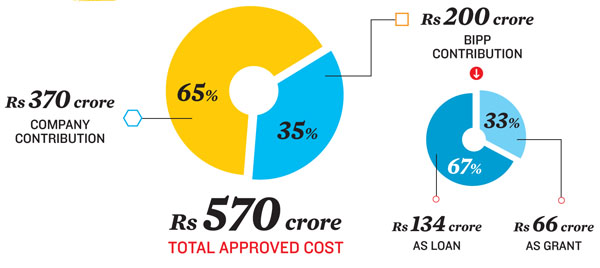Feb 24, 2012 | 3898 views
Science's Second Coming to India
 |
|
Image: Getty Images
|
|
TEMPLE OF LEARNING Ruins of Nalanda, one of the first great universities in recorded history. India is now pushing ahead with a range of new policies to bring back its brains trust in the West and to stimulate a renaissance in the innovation eco-system
|
A couple of weeks ago, some of us got into an interesting conversation with Howard Gardner, who was on a visit to India to deliver a series of lectures. He is widely regarded as one of the most influential psychologists in the world today. Author of 25 books that have been translated into 28 languages and best known for his theory of multiple intelligences, in 1995, he mounted a study that lasted until 2006 and involved 1,000 American journalists and geneticists. The question he was seeking to answer was an intriguing one. Why are journalists an unhappy lot while geneticists a happy bunch?
The answer was interesting. Journalists, he concluded, were idealistic individuals who got into the profession and hoped their work would change the world. Once they were in though, they figured, the business was run by people whose interests were focussed almost entirely on the bottom line. The real world was out of sync with everything they had imagined it to be.
|
Related stories
|
Geneticists, on the other hand, as much idealists as journalists are, had everything going for them. The Human Genome Project was the Holy Grail that needed to be cracked. The geneticists therefore had to focus on nothing but their work; the American government was solidly backing every gamble the geneticists wanted to take; venture capital funding was chasing them in droves because they knew as well the Holy Grail needed to be cracked, and the only way it could be was by supporting the best minds America had. And if need be, do what it takes to get the best talent from across the world.
Eventually, the project was completed in 2003 and the euphoria lasted a while. Over time though, it started to diminish and, much like in journalism, conflicts began to erupt between the various stakeholders. The geneticist’s idealism now finds itself at odds with an eco-system starved for funds and hell bent on maximising profits. As Gardner wryly says, “It is difficult to do good work that is both technically excellent and carried out in an ethical way when a market is down.” To that extent, it wouldn’t be way off the mark to argue the golden age of American science is waning. Of course, as Gardner quickly adds, “All misalignments are temporary.” But in one man’s misery, even if it be temporary, lies another man’s fortune.
Which is why, policy makers in India, which for decades has exported its finest minds to countries like the US, are wringing their hands with delight. By all accounts, the wheels have been set in motion to win back some of the finest minds of Indian origin to align forces with their country of origin—either by coming back home, or by helping set up the framework that will stimulate a renaissance.
To get a sense of the minds now being wooed by the government and businesses in India, starting Page 70, we’ve put together a list of 18 scientists of Indian origin who’ve had enormous impact on the disciplines they operate in. It includes areas as diverse as nano particles to treat cancer, global warming, landmark discoveries on diseases until now thought of as untreatable, biometrics and pattern recognition, regenerative medicine, and technologies we now consider ubiquitous like the humble USB port.
Bits to Torrents
G. Rangarajan is already preparing for his visit to Stanford three months from now. A professor of mathematics at the Indian Institute of Science, he will descend on the university’s campus as part of a delegation of directors from some of the leading institutes that include the IITs, the National Institute of Technology and the Indian Statistical Institute. This crack team intends to address an audience of academics, mostly of Indian origin, and urge them to consider a career in research back home.

Rangarajan, who is coordinating the visit, has a deck of slides ready, which offer a graphic picture of academic life in India. It even gets down to brass tacks like salary structures, what pay hikes to expect, consulting opportunities available, startup grants on offer and even domestic help—a carrot unavailable in the West.
“We have an acute shortage of these professionals, especially in computer science. So we decided on these road shows to spread the word that life here isn’t bad,” says Rangarajan. To buttress his case, he argues that adjusted for purchasing power parity, a full professor’s salary in the US at $12,500, is on par with the $2,900 on offer in India. This isn’t the first time government-backed institutes have been on such a man hunt. Two years ago, a similar exercise was conducted at Brown University in the US and a handful of researchers bit the bait.
The department of science and technology stepped up its initiative last November. T. Ramasami, the secretary who looks after the department, was able to collect at least 330-odd resumes from leading universities in the US. “I have sent the CVs to various institutions for consideration. In the 12th Plan, my department will give a start up research grant of Rs. 50 lakh each to 1,000 people who return to India. This will be over the salary or research facilities that the hiring institution provides,” he says.

